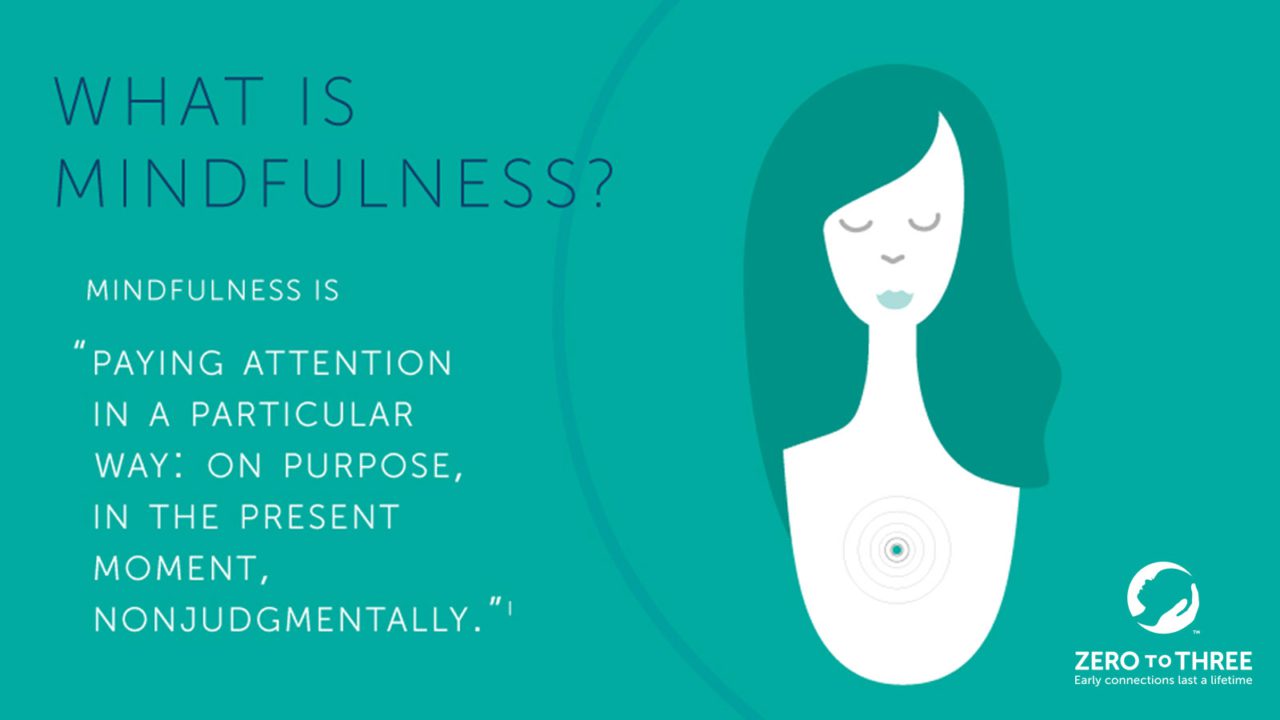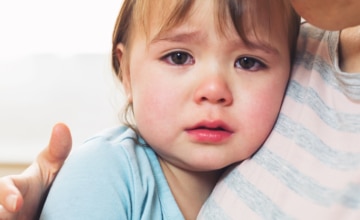While there are many forms of meditation that are wonderful mindfulness practices, there are also lots of other ways to practice too, even simple things you can easily weave into regular daily activities.
By Maria Gehl, Project Director
There is a growing interest in our society to find relief from the fast pace and anxiety of life that has led many to turn to the ancient practice of mindfulness. Mindfulness is intentionally bringing our attention to what’s happening in the present moment with acceptance and openness. It means being curious and not judging whatever is happening. Showing up in this way leads us to authentic and attuned connection with ourselves and with others. This kind of thoughtful presence is especially important for interactions with very young children, which is why I am excited that ZERO TO THREE and other early childhood organizations are exploring and integrating mindfulness practices in new and expansive ways.
ZERO TO THREE recently implemented a member survey and held two focus groups at our Annual Conference last December to learn about how early childhood professionals use or want to use mindfulness practices in their work. One thing we discovered is that most people who are doing this work are motivated by their personal experience of contemplative practice and its positive impacts in their own life. This discovery really resonated with me. I have regularly practiced meditation, breathing exercises, and mindful movement for almost 20 years. These practices have supported me through all the ups and downs of life and parenting—some mundane and some dramatic. Practicing mindfulness has increased my self-awareness, it helps me stay calm and patient even in chaotic situations, supports my recovery from stress, improves my focus, and has had profound impacts on my relationships, including helping me be a more attuned and compassionate mom and grandma! The experience of increased connection and joy in my life inspired me to introduce mindfulness practices to others, which I started doing about 10 years ago.
There are many headlines about mindfulness these days—and just as many different perspectives. Some people think practicing mindfulness means silent meditation, that you must sit still and work to quiet your mind. While there are many forms of meditation that are wonderful mindfulness practices, there are also lots of other ways to practice too, even simple things you can easily weave into regular daily activities. One approach I often recommend for parents and early childhood professionals just starting to explore mindfulness practices is to use their senses to focus in on something they usually find soothing—because, as well as developing mindfulness, this is a conscious act of self-care. For example, if you love hot tea or coffee, choose a time during the day when you would normally have a cup—and spend 2 minutes (and I literally mean 2 minutes, set your timer!) savoring the experience. Breathe in the scent and steam, play close attention to the subtle aromas. Take a sip and feel the temperature of the liquid on your tongue or the warmth of the cup in your hands. Notice whether the flavor changes as it moves from your lips to the back of your throat. Investigate how the warmth might spread from your belly throughout your body. Stay with this sensory experience for the whole time. If you get distracted, just notice that (no judging your busy brain) and come back to the sensations. The point is to use your senses to focus fully on the present moment and re-focus as many times as needed.
This is truly simple but not always easy to do, and some days are tougher than others. It may be hard to stay with the experience for more than even a few seconds at a time. However, by practicing, you will strengthen your ability to tune in to the present moment, and over time it will become easier for you to do this, even in challenging situations. One result is that you’ll get better at letting go of distractions or worries to be fully available and receptive to interactions with the children in your life.
Recently, I heard someone say mindfulness is not something to do, it is a way to be. I love this thought and totally agree—and practicing really helps! I’m looking forward to sharing more information and resources about mindfulness in early childhood settings and for parents in the upcoming months.
Editor’s Note: Please visit the Mindfulness in Early Childhood page on the ZERO TO THREE website for resources for parents and professionals, including our recorded webinar, “How Can Mindfulness Support Early Childhood Development.”




